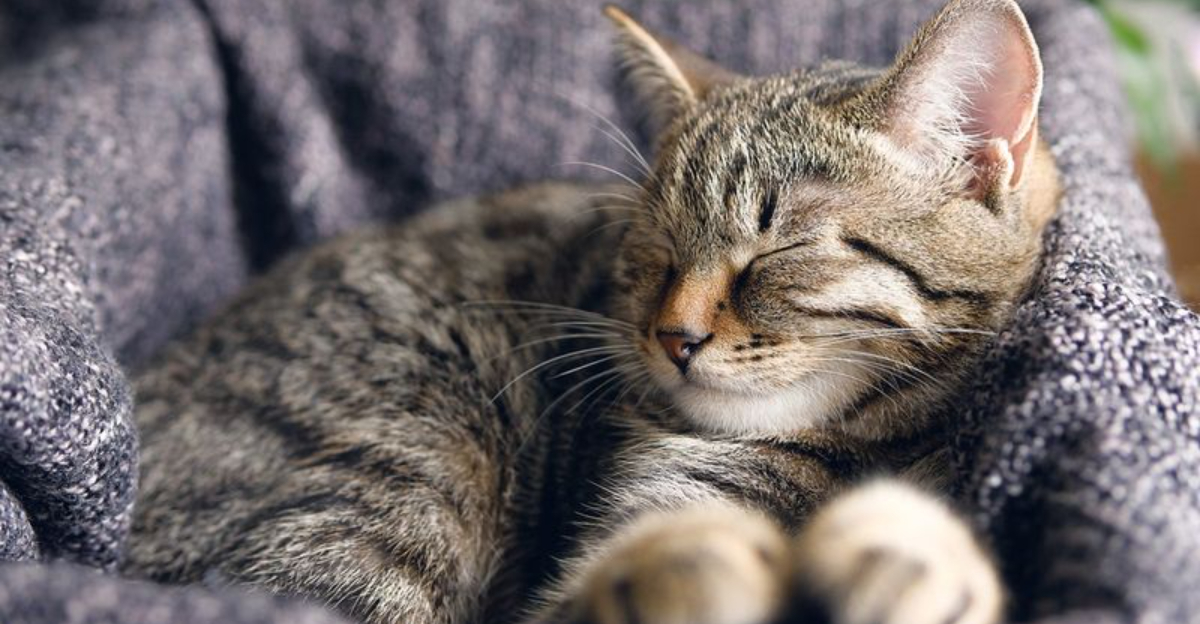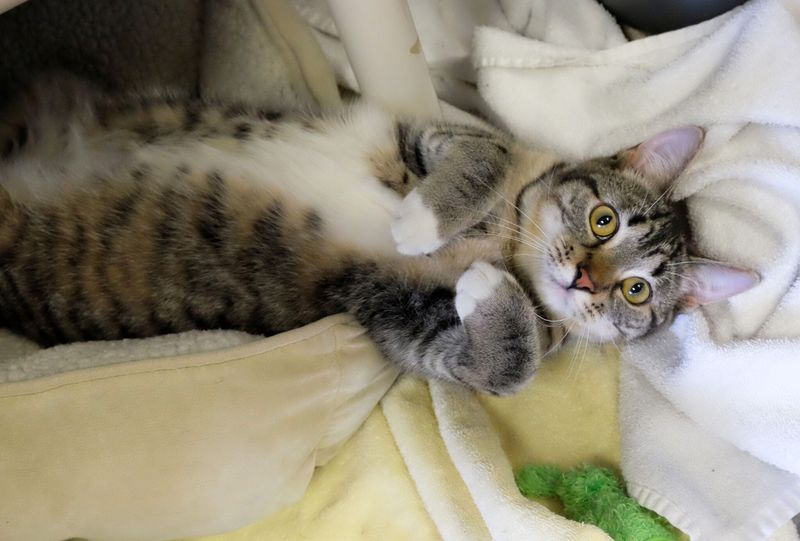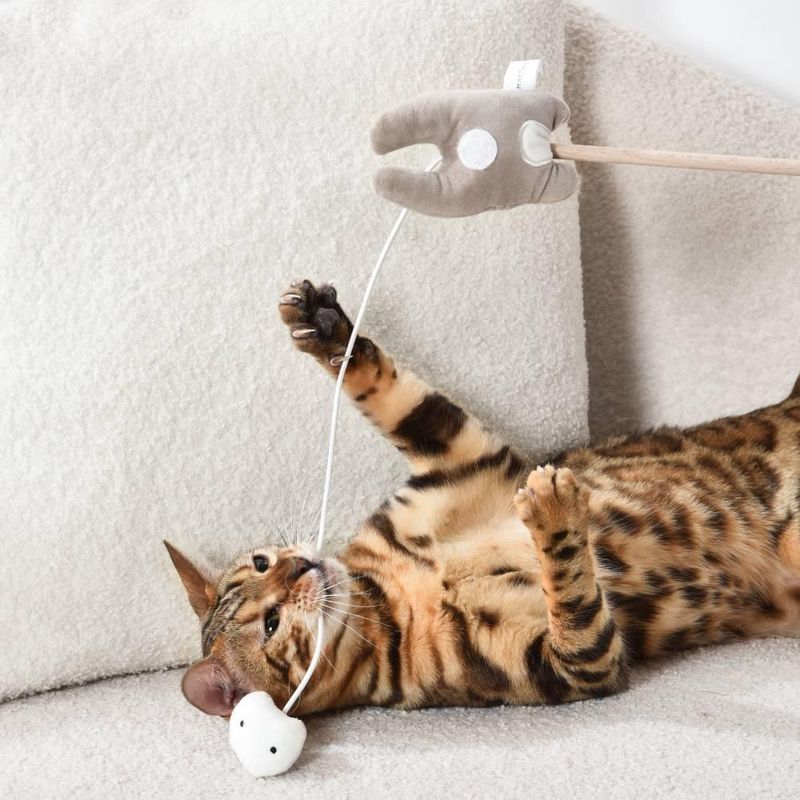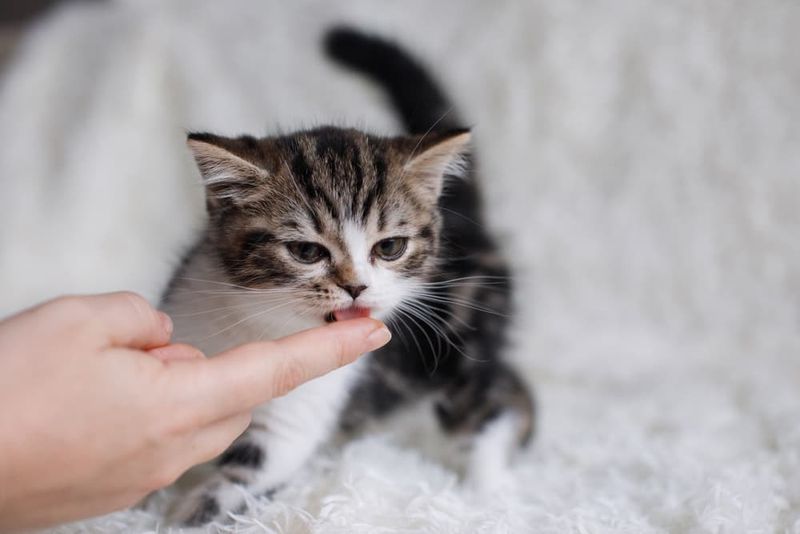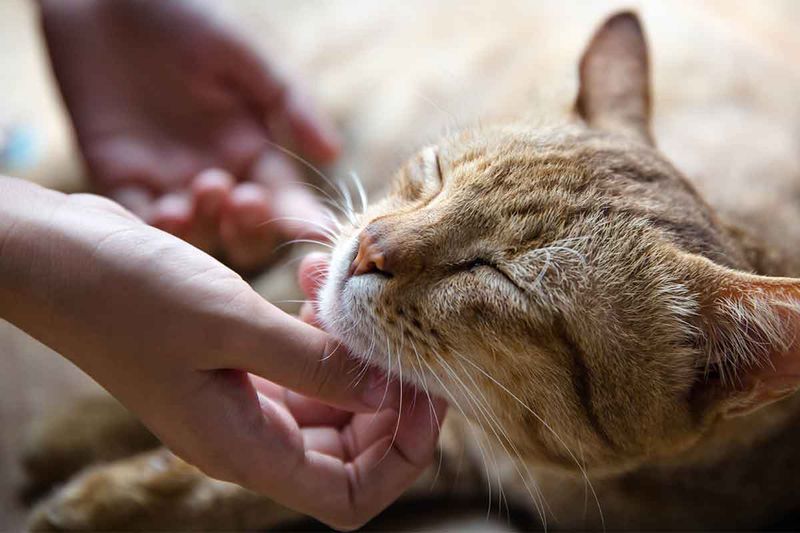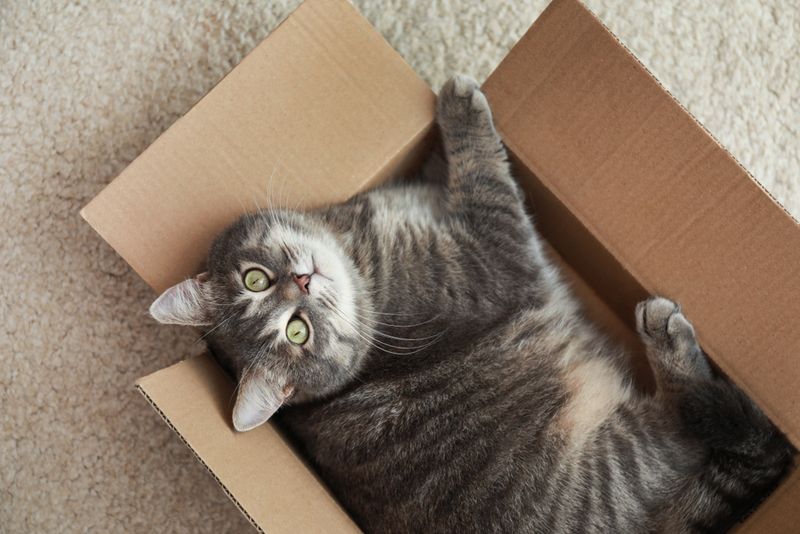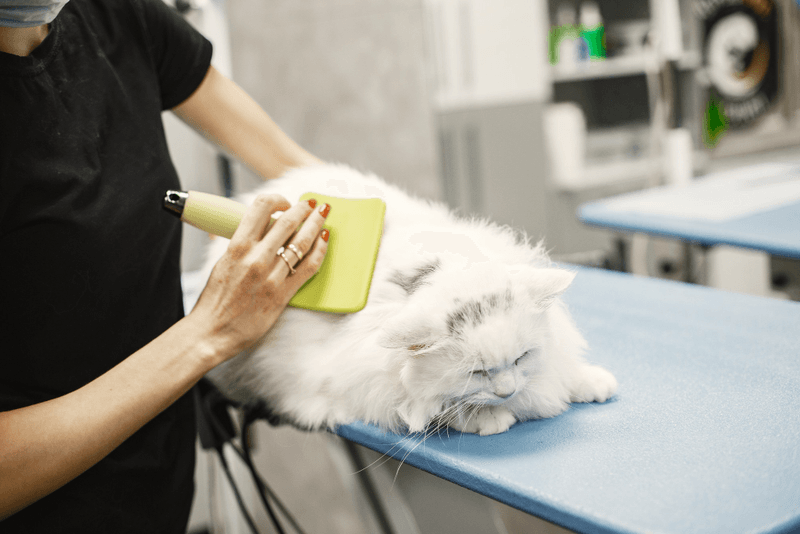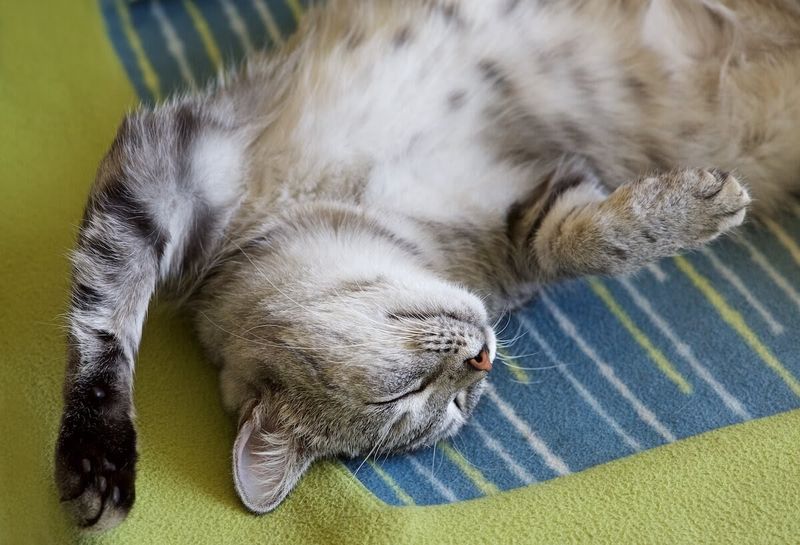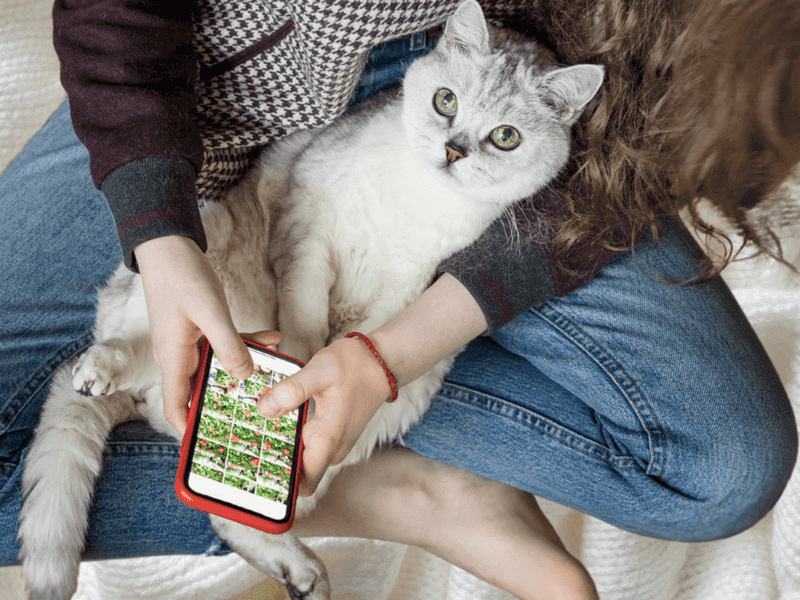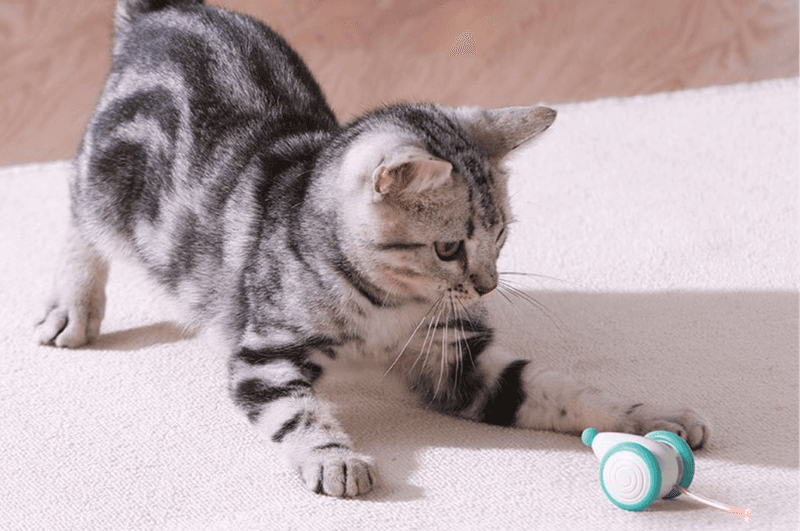📖 Table of Content:
- 1. Respect The Belly Trap
- 2. Create Predictable Routines
- 3. Slow Blink Conversations
- 4. Master The Art Of Play
- 5. Provide Elevated Resting Spots
- 6. Become The Treat Provider
- 7. Learn Their Unique Love Language
- 8. Provide Cardboard Sanctuaries
- 9. Master The Gentle Approach
- 10. Become Their Grooming Partner
- 11. Create A Peaceful Environment
- 12. Perfect The Art Of Ignoring
- 13. Acknowledge Their Gifts
Cats are often seen as mysterious beings, each with distinct personalities and preferences. Gaining a cat’s affection may appear challenging, but it is simpler than it seems. With the right approach, it’s possible to create a bond based on trust and mutual respect.
Felines tend to respond positively to behaviors that make them feel secure and valued. Consistency plays a key role in building a positive relationship, as cats appreciate routine and gentle interactions. Simple actions can go a long way in fostering a deeper connection with a cat.
Becoming the person a cat eagerly seeks out doesn’t require extravagant gestures. Small, thoughtful actions can make a world of difference in how a cat perceives its human. With a few easy steps, any owner can strengthen their relationship and earn a feline’s unwavering affection.
1. Respect The Belly Trap
That fluffy exposed belly isn’t always an invitation for rubs! Unlike dogs, most cats show their bellies as a sign of trust, not as a petting request. When cats roll over, they’re actually displaying vulnerability and confidence that you won’t hurt them.
Focus instead on petting their cheeks, behind the ears, and along the back where most cats universally enjoy attention. By respecting these boundaries, you’re building trust rather than triggering their defensive instincts.
Your restraint will be rewarded – many cats eventually offer true belly access to humans who’ve proven themselves worthy through patience and understanding.
2. Create Predictable Routines
Cats thrive on consistency and routine, finding comfort in knowing what happens when. Regular feeding times, play sessions, and even your own daily schedule help your cat feel secure in their environment. This predictability reduces anxiety and builds trust.
Morning routines especially matter to cats. Whether it’s breakfast at 7 AM or playtime after work, sticking to a schedule shows reliability. Your cat will begin to anticipate these moments and associate you with positive, dependable experiences.
Even small consistencies like always greeting them when you enter a room helps establish you as their trusted anchor in an unpredictable world.
3. Slow Blink Conversations
Through body language, cats communicate their feelings, and a slow blink is a clear sign of love and trust. If your cat locks eyes with you, slowly blink your eyes to convey that you’re relaxed and not a danger. This small action helps reinforce a sense of comfort and security.
Many felines will return the gesture, essentially blowing you kitty kisses! This simple non-verbal exchange builds a deeper bond between you two without any effort. Make it a daily habit during quiet moments together.
Cat behaviorists refer to this as the “cat kiss,” and it’s one of the most direct ways to speak your cat’s language without saying a word.
4. Master The Art Of Play
With their inherent hunting instincts, cats need opportunities to hunt and play. Even a few minutes of play each day can satisfy their prey drive and help them form stronger bonds with you. Wand toys that mimic the motions of birds or mice are perfect for tapping into their natural instincts.
Play until your cat shows signs of tiredness – typically 10-15 minutes. This mimics their natural hunt-catch-kill-eat cycle and leaves them feeling fulfilled. Ending play sessions with a small treat reinforces the hunting success.
Rotating toys keeps the experience fresh and exciting. Remember that play style preferences vary – some cats prefer ground-based “prey” while others love aerial challenges. Discovering what makes your cat’s hunting instincts light up builds a special connection.
5. Provide Elevated Resting Spots
Seeking higher ground is a natural behavior for cats, as it offers both safety and a good view of their surroundings. Creating accessible elevated spots around your home satisfies this need for security and territorial pride. Window perches, cat trees, and even cleared shelves let them keep an eye on everything.
These vantage points reduce stress by providing escape routes from other pets or household activities. Your cat will appreciate having options to retreat while still keeping an eye on everything.
The best part? When cats voluntarily come down from these safe spaces to spend time with you, it’s a huge compliment. They’re choosing your company over their secure perch – a true sign of preference and trust!
6. Become The Treat Provider
By offering treats strategically, you can create lasting positive connections with your cat. Giving small, high-quality treats only occasionally adds an element of surprise, making you the source of unexpected joy. Freeze-dried meat is typically at the top of every cat’s preferred treat list.
Treats work best when they’re special rather than expected. Random timing prevents your cat from taking you for granted while reinforcing your status as the bringer of good things. Keep portions tiny – a pea-sized amount is plenty for a cat.
Timing matters too. Offering a treat when your cat approaches you voluntarily or after veterinary procedures builds an association between potentially stressful situations and pleasant outcomes. Soon your mere presence signals good possibilities!
7. Learn Their Unique Love Language
Every cat has individual preferences for physical affection. Some adore cheek scratches but hate tail touches. Others melt for chin rubs but dislike back pets. Paying attention to these subtle cues shows respect for their boundaries.
Watch for signs of enjoyment: purring, leaning in, or slow blinking. Flattened ears, tail swishing, or skin twitching usually indicate overstimulation or discomfort. Honoring these signals builds tremendous trust between you.
Experiment with different petting styles too. Some cats prefer firm pressure while others like light touches. Finding your cat’s specific preferences and respecting them demonstrates that you understand their needs better than anyone else.
8. Provide Cardboard Sanctuaries
Cats have an almost mystical attraction to cardboard boxes. These simple containers provide security, warmth, and hiding spots that satisfy deep feline instincts. Leaving a few empty boxes around creates instant cat entertainment and security stations.
The enclosed space helps cats regulate body temperature and provides a sense of protection. For newly adopted cats, especially, boxes offer safe observation points to adjust to their environment.
Rotate boxes occasionally to maintain interest. Adding a soft blanket inside makes the hideaway even more appealing. Your willingness to incorporate these “unsightly” cardboard sanctuaries shows you prioritize your cat’s needs over perfect home decor – something they definitely notice!
9. Master The Gentle Approach
Sudden movements and loud noises trigger a cat’s survival instincts. Moving slowly around your cat, especially during initial interactions, builds tremendous trust. Always approach from where they can see you rather than from behind or above.
Lower yourself to their level instead of towering over them. This non-threatening posture signals respect for their space. Extending a finger at their nose level allows them to initiate contact through scent before touch.
Speaking softly before handling helps too. Announce your presence with a consistent greeting. These small courtesies show you understand feline communication styles and respect their need for predictability – making you distinctly more trustworthy than humans who grab or surprise them.
10. Become Their Grooming Partner
Brushing sessions satisfy your cat’s grooming needs while creating bonding time. Regular brushing removes loose fur, prevents hairballs, and feels like affection to most cats. Start with short sessions (2-3 minutes) and gradually increase as your cat shows enjoyment.
Different coat types need different tools – short-haired cats usually prefer soft brushes, while long-haired felines need combs that reach the undercoat. Pay attention to your cat’s reactions to find their preferred pressure and areas.
The greatest compliment? When your cat grooms you back! Those little licks on your hand or arm are their way of returning the favor and marking you as part of their family group.
11. Create A Peaceful Environment
Cats are sensitive to their surroundings and appreciate humans who maintain calm, quiet spaces. Reducing unnecessary noise and chaotic activity helps your cat feel secure rather than constantly on alert. Consider your cat’s perspective when playing loud music or having animated gatherings.
Designated quiet zones with soft bedding give your cat retreat options during busier times. These sanctuaries should remain undisturbed, especially when your cat is using them.
Your role as the protector of peace makes you valuable in your cat’s eyes. They notice when you intervene to stop rough handling by visitors or maintain their routines during disruptions – establishing you as their reliable guardian and advocate.
12. Perfect The Art Of Ignoring
Counter-intuitive but effective: selective ignoring often attracts cats more than constant attention. Many cats prefer to initiate interaction rather than receive unsolicited affection. Respecting this preference by focusing on your own activities often results in a curious cat seeking your attention.
Reading a book or working on your laptop while casually ignoring your cat frequently leads to them climbing into your lap or rubbing against you. This behavior stems from cats’ natural curiosity and their attraction to people who aren’t forcing attention on them.
The famous cat paradox applies here – those who want cats’ attention least often receive it most! Mastering this balance of availability without pushiness makes you irresistibly intriguing to your feline friend.
13. Acknowledge Their Gifts
Finding a toy mouse in your shoe or a “real” hunting trophy on your doorstep requires the right response. These offerings are your cat’s way of sharing resources and displaying their hunting prowess. Rather than scolding, acknowledge their contribution with praise.
For indoor cats, especially, toy “hunts” fulfill natural instincts. When they bring you these items, they’re sharing their success and including you in their important activities. A simple “thank you” and gentle pets reward this behavior.
Your positive reaction reinforces their view of you as an appreciative family member rather than an ungrateful recipient. This mutual gift economy may seem small, but it builds significant bonds in the cat-human relationship.
